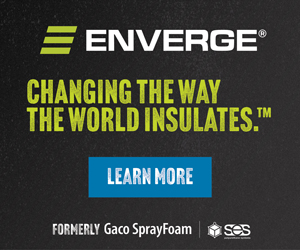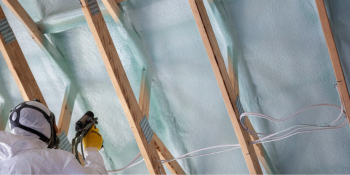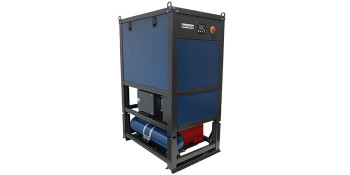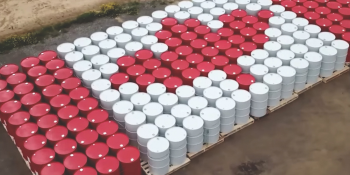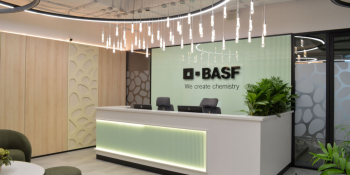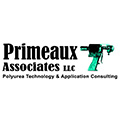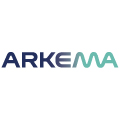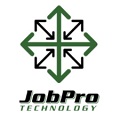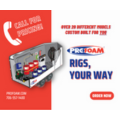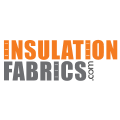Foam Construction Adhesives

Back to Education Center | Architect's Guide
Spray polyurethane foam (SPF) is widely used as an adhesive in commercial roofing systems, residential roof decks, and manufactured housing. It offers a host of structural, performance, and cost-saving benefits.
Commercial Roofing Adhesive
Low-rise, two-component SPF roofing adhesive is designed to adhere EPDM membranes or foam board insulation to a variety roofing substrates. SPF roofing adhesive can also be used to strengthen metal roofing systems when applied to the underside of the roof decking by adhereing the trusses to the metal sheeting. The foam adhesive is spray-applied, which significantly reduces application time and labor costs during installation. The foam provides an added degree of insulation to the roof system and forms a strong adhesive bond, earning it excellent wind uplift ratings.
More About Commercial Roofing Adhesives.
Residential Roofing: Wind Uplift Mitigation
Between 50-70% of hurricane induced losses are caused by roof failures and water intrusion through the roof after the roof covering fails. Closed-cell formulations of sprayed polyurethane foam insulation applied directly to the roof deck from the inside of the home can create a tenacious bond between the roof sheathing and the roof joist structure, while increasing the homes energy efficiency at the same time.
More About Roofing Adhesives for Homes.
Manufactured Housing
Spray foam adhesives can be used to attach wall panels and ceiling panels to structural stud framing. Advantages to the builder come in the form of speed, added strength, reduction in mudding time, fewer repairs, and a lower cost to produce a finished home. Additional benefits include the elimination of mechanical fasteners and batten strips, reduced damage from shipping and transport, stronger walls and structural integrity in the building, and significantly reduced air infiltration protection. There are many advantages to the buyer/homeowner as well, such as the elimination of nail pops, enhanced energy savings due to decreased air infiltration, and consistent, professional-looking seams.




